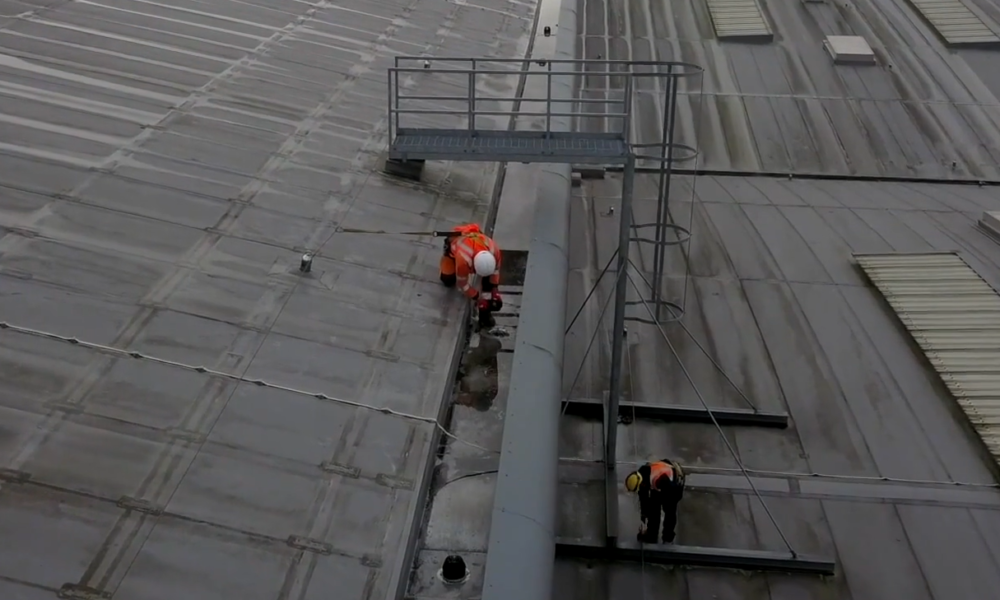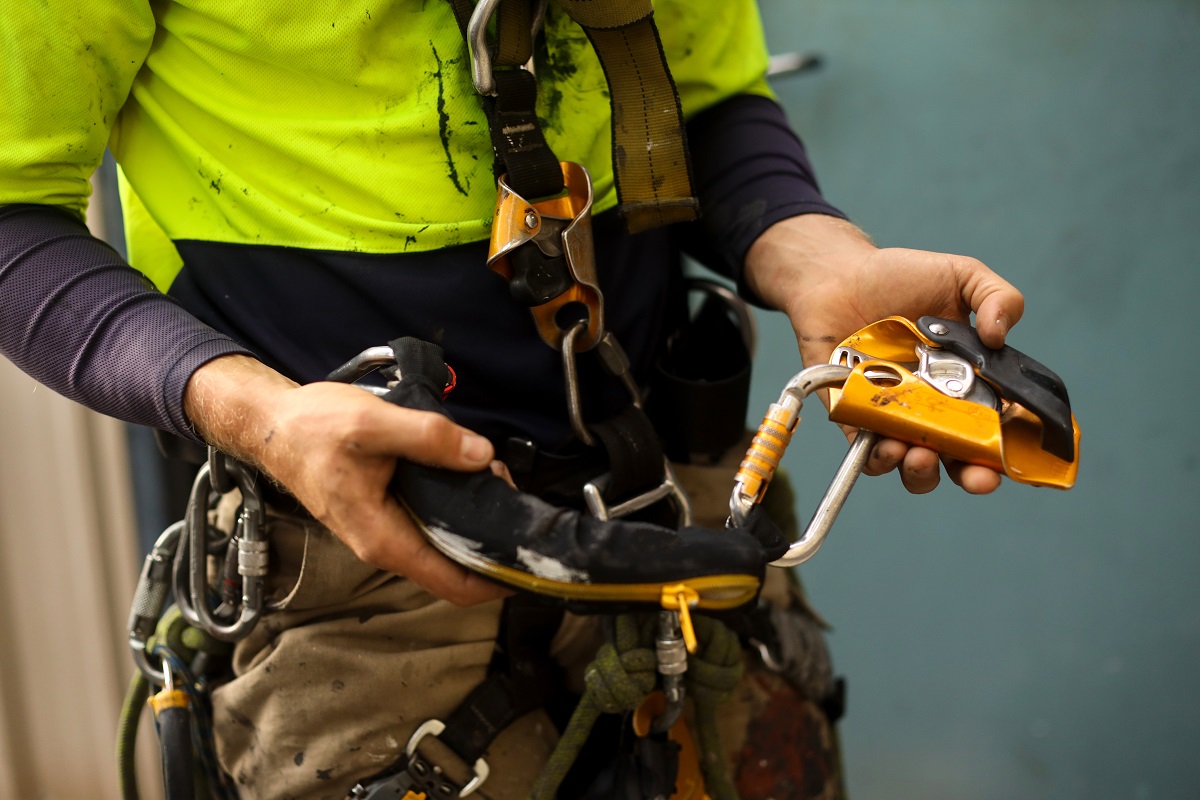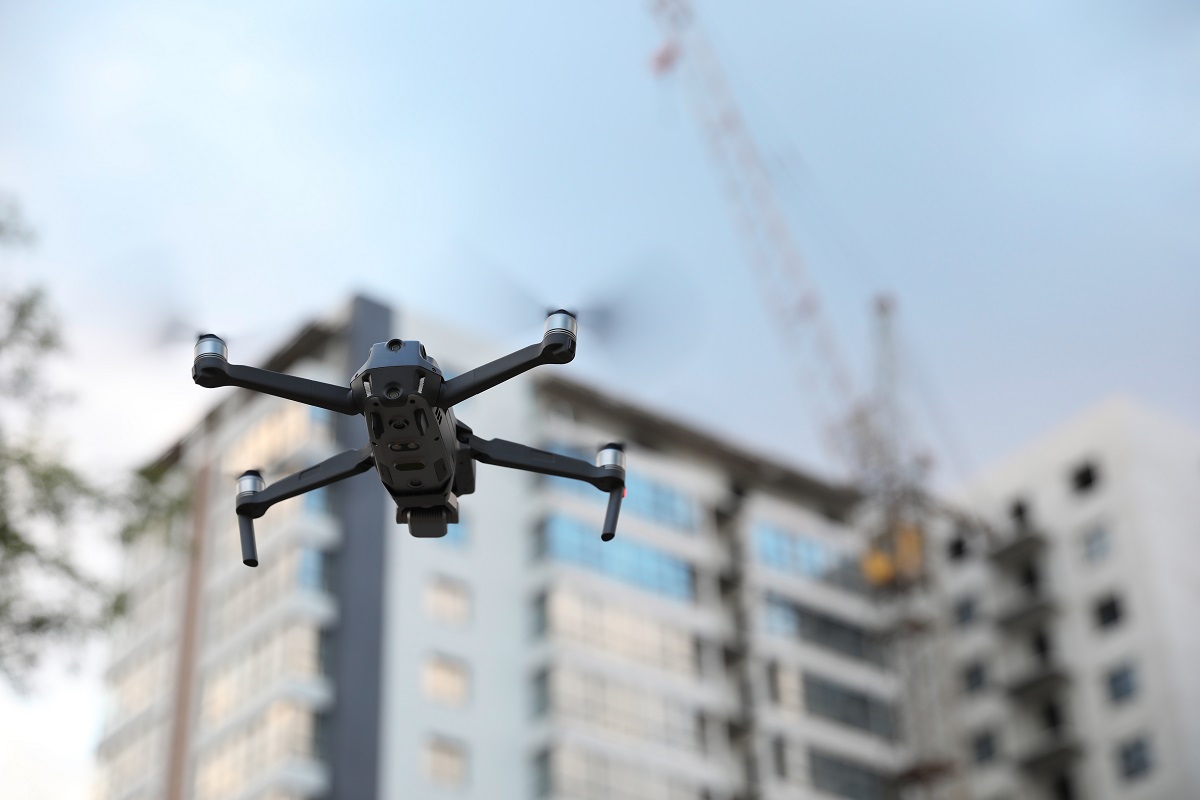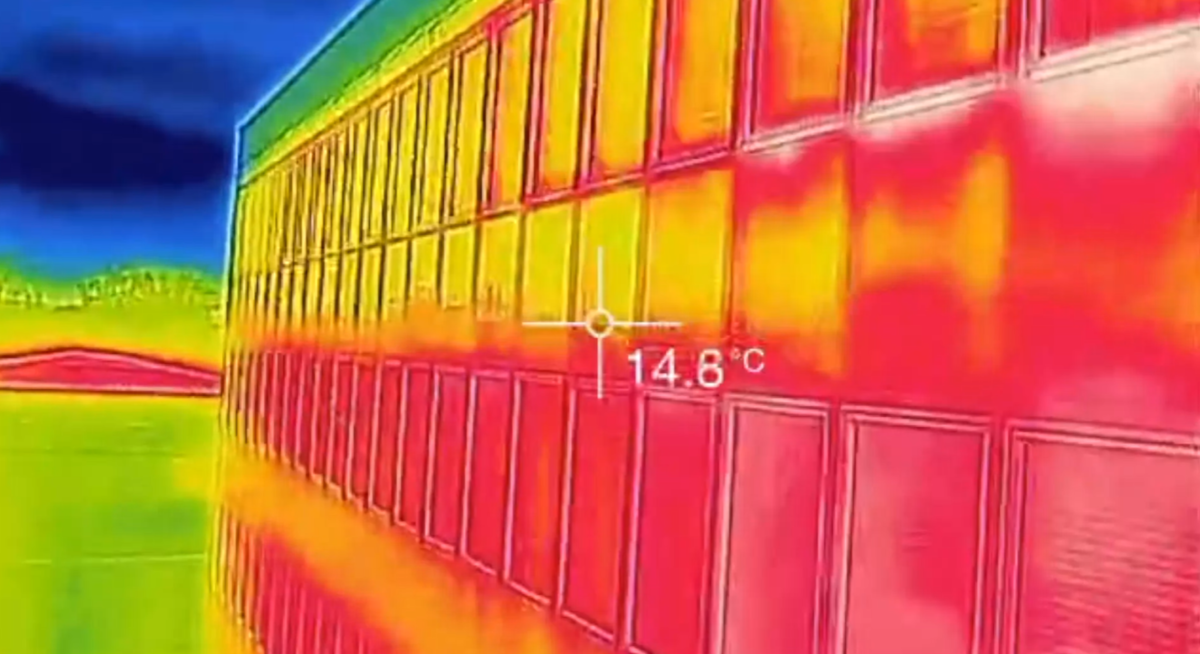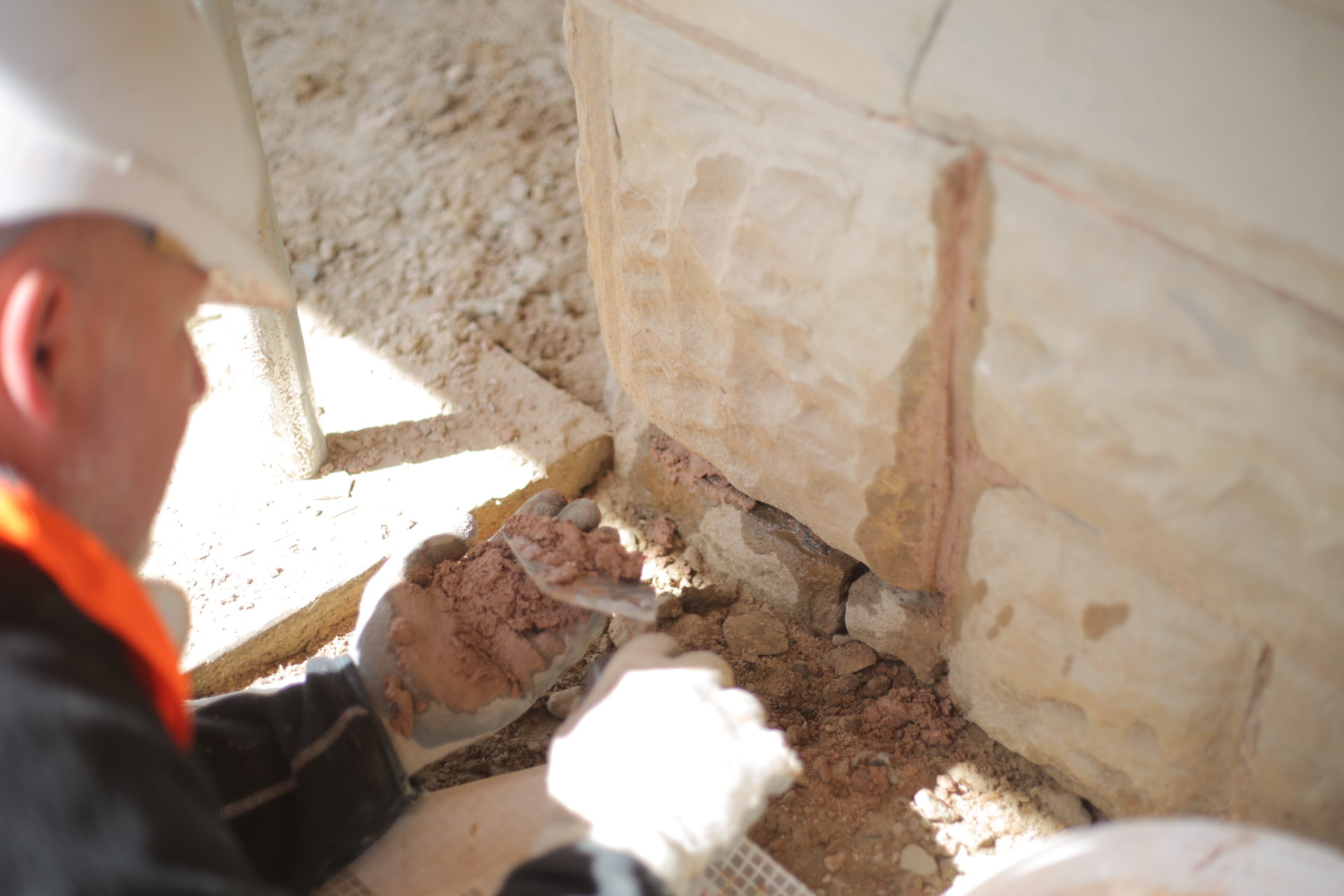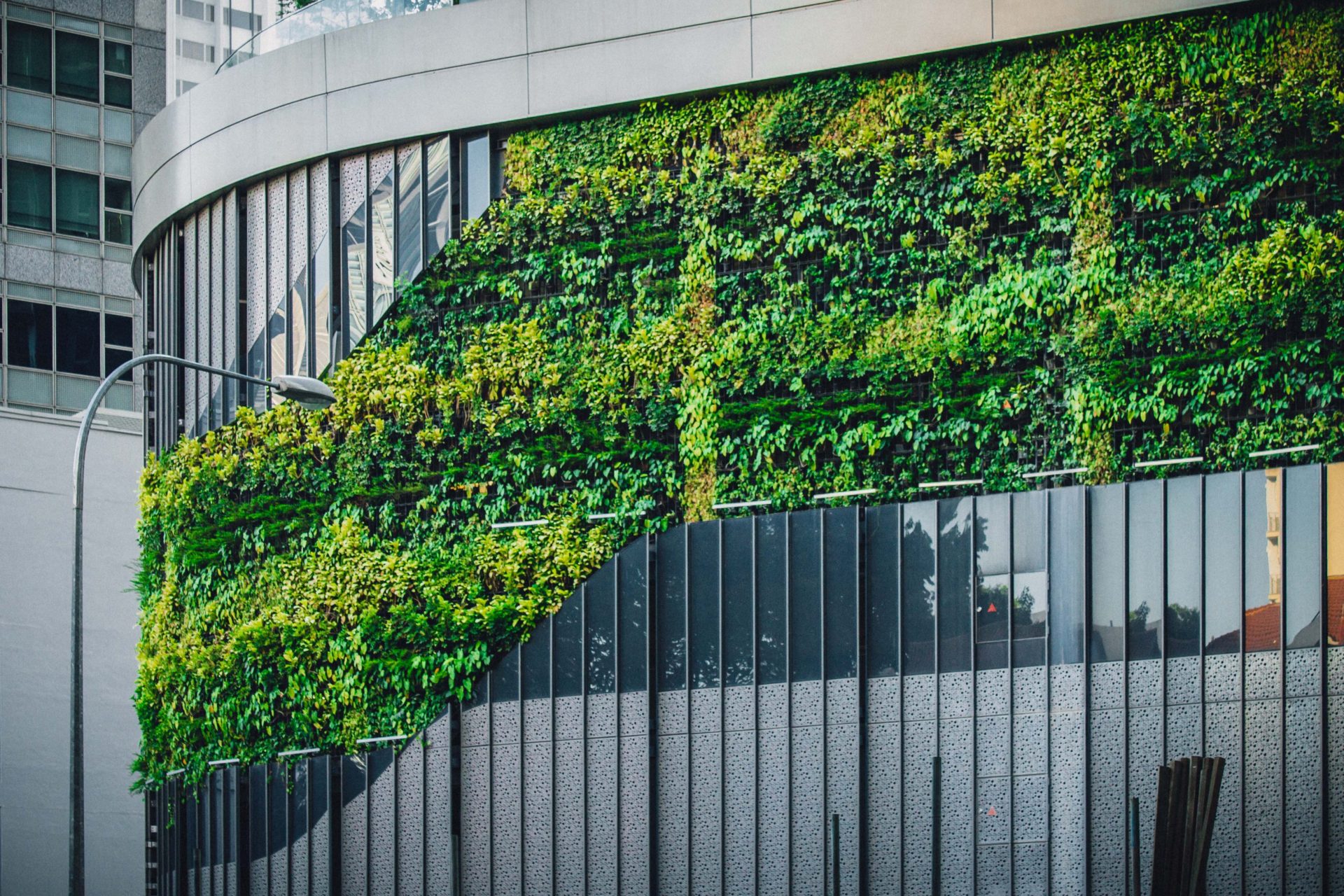A wet test, or “Vector Mapping” is used to find defects in waterproof membranes and works on a similar principle to the dry test. The purpose of the wet test is to find defects in a waterproof membrane, but it only requires a conductive material to be present in the roof build up and not directly below the waterproofing.
How does it work?
Based on a low voltage signal (between 30v and 40v) generated from a battery the test is non-destructive and will pick up defects between lapped materials. The area to be tested has to be thoroughly wetted down but should not have standing water present. A chain or wire is then passed round the area to be tested and connected to the signal generator; the generator is earthed to a suitable part of the building to complete the circuit.
Utilising a pair of probes with a directional meter attached, the operative then proceeds to measure the resistance of the membrane inside the chain, the meter will indicate where the resistance is reduced and lead the engineer to the defect. Water is used to conduct the water around the roof surface, and, like electricity, the water is trying to reach earth and will follow the path of least resistance.
Unlike the dry test, water can enter the lap or seam of welded material and will help the engineer to pick up failed welds. Defects can then be marked on the roof and then repaired on marked up and put on a plan to repair at a later date.
Low voltage testing will work on nearly all membranes apart from ones that conduct electricity (such as EPDM) or have no conductive material at any level (such as top deck or timber decks). All membranes should be lap scribed once the testing has been carried out. The wet test will allow nearly any thickness of membrane to be tested provided it has been wetted down properly.
The roof does have to be clear of decking, debris, materials and all finishes to allow the test to work effectively, the chain has to be in direct contact with the roof membrane.
Advantages
- Not weather dependent.
- Works on nearly all roof membranes, e.g. liquids, asphalt, RBMS, single ply.
- Does not need a conductive surface directly below the membrane. Provided there is a conductive element in the build up, i.e. concrete or steel deck, foiled faced insulation or VCL.
- Non-destructive testing.
- Can detect lap defects.
Disadvantages
- Cannot be standing water on the roof. This can lead to false earth pathways being detected.
- Needs a constant supply of water to stop membrane drying.
- Needs a skilled operator.
- Outlets, detailing, and penetrations have to be removed from the chain potentially leaving untested areas of the membrane.
- Slower than dry testing/ less area tested in a day.
- Does not work on EPDM, limited results on Topdeck. Will not work on roofs that have no conductive element. e.g. Timber deck, tissue PIR.
Summary
Working on a much wider variety of membrane and roof build ups gives wet testing a major advantage over dry testing, however it does need a skilled operator to get the best results. On new builds the roof should be wetted down substantially over a period of time to create the leak pathways. The wet test is not weather dependent so less likely to be held up although some ply membranes will need a wetting agent applied to increase the surface tension of the water a prevent run off.


